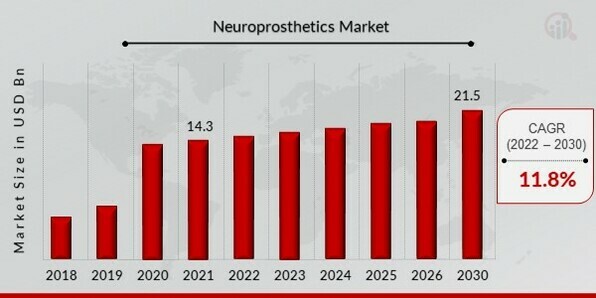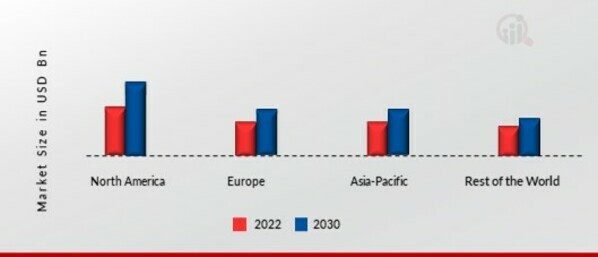Certified Global Research Member


Key Questions Answered
- Global Market Outlook
- In-depth analysis of global and regional trends
- Analyze and identify the major players in the market, their market share, key developments, etc.
- To understand the capability of the major players based on products offered, financials, and strategies.
- Identify disrupting products, companies, and trends.
- To identify opportunities in the market.
- Analyze the key challenges in the market.
- Analyze the regional penetration of players, products, and services in the market.
- Comparison of major players’ financial performance.
- Evaluate strategies adopted by major players.
- Recommendations
Why Choose Market Research Future?
- Vigorous research methodologies for specific market.
- Knowledge partners across the globe
- Large network of partner consultants.
- Ever-increasing/ Escalating data base with quarterly monitoring of various markets
- Trusted by fortune 500 companies/startups/ universities/organizations
- Large database of 5000+ markets reports.
- Effective and prompt pre- and post-sales support.
The market for Neuroprosthetics is greatly affected by the growing number of neurological diseases all over the world. Health problems like Parkinson's disease, epilepsy and spinal cord injuries push people to need neuroprosthetic tools that can fix or improve brain function. New technology is important in making the Neuroprosthetics market what it is. The always changing ways we use brain-stimulating methods, connect brains to computers and put devices in people are making new treatment choices.
This helps the market grow more too. The world's change in population towards older people contributes to the buying and selling patterns of Neuroprosthetics. As old people become more common, so do health problems linked to age. This means we need new brain-helping devices even more to make life better for them. Money given by the government for research and development of neuroprosthetic technology has a big effect on market patterns.
When more money is put into studying the brain, and efforts are made to make healthcare better, people can get neuroprosthetic devices easier. This helps grow market size too. As more people and doctors learn about the good things that come from using neuroprosthetics, it helps the market to grow bigger. Teaching more about how to use brain device solutions can help with neurological problems. This encourages people to start using these advanced tools early on.
Healthcare groups, research places and businesses working together help create new devices for the brain. This makes these tools develop quicker too. These partnerships help bring together more resources and know-how, leading to the introduction of advanced and better working brain devices. Strict rules guide the Neuroprosthetics industry by making sure devices are safe and work well. Following the rules set by regulators is very important for those in business.
It influences how they make their products, get them approved and start selling them to customers. More and more patients are choosing low-invasive brain devices, like outside gadgets or stuff you can wear. This is changing market trends. This habit is pushed by wanting treatments that are less intrusive with fewer bad effects.
The price of devices that help with the brain is a big thing in markets. Price and payment rules affect how easy it is to use these technologies. They also change the number of people using them and their popularity in markets.
Covered Aspects:
| Report Attribute/Metric | Details |
|---|---|
| Growth Rate | 11.8% (2022-2030 Base Year 2021 Forecast Period 2022-2030 Historical Data 2020 Forecast Units Value (USD Billion) Report Coverage Revenue Forecast, Competitive Landscape, Growth Factors, and Trends Segments Covered Type, Technology, Applications, and End users Geographies Covered North America, Europe, Asia-Pacific, and Rest of the World (RoW) Key Vendors Medtronic (US), Abbott (US), Cochlear (Australia), Boston Scientific (US), Livanova (UK), Second Sight (US), Med-El (UK), Retina Implant (US), Sonova (UK), Neuropace (US), Nevro (California), and others Key Market Opportunities New product launches and R&D Amongst major key Players Key Market Drivers Increasing prevalence of neural diseases Over active bladder syndrome and Chronic disorder |
Neuroprosthetics Market Highlights:
Neuroprosthetics Market Overview
The neuroprosthetics market was valued USD 14.3 billion in 2021 and is expected to reach USD 21.5 billion by 2030 at 11.8% CAGR during the forecast period 2022-2030. Neuroprosthetics are medical devices that are designed to send signals to the central nervous system while also receiving input from the outside world. These devices are employed in the treatment of neurological illnesses like epilepsy, Parkinson's disease, and visual prosthetics, among others. The increasing frequency of neurological diseases, overactive bladder syndrome, and chronic disorders such as epilepsy are driving this market's favorable expansion. The rising number of patients suffering from neurological disorders and nerve injury, the rising incidence of hearing loss, the increasing cases of amputations due to the rising number of accidents and injuries, and the rising prevalence of diabetes are the major factors driving the market growth of the Neuroprosthetics.
 Diabetes patients may develop a variety of foot problems, including blood vessel and nerve damage. Also, diabetes can harm the blood vessels in the retina, resulting in vision problems or blindness. As a result, the growing prevalence of diabetes is predicted to boost demand for retinal/bionic eye implants. Amputations due to dysvascular disorders and diabetes are projected to fuel demand for mechanical limb replacements soon leading to the growth in Neuroprosthetics Market. Diabetes has a large regional difference in prevalence. Because the weight of this factor is larger in the Asia Pacific area, it is likely to have a greater impact on the market in Southeast Asia and the Indian subcontinent.
Diabetes patients may develop a variety of foot problems, including blood vessel and nerve damage. Also, diabetes can harm the blood vessels in the retina, resulting in vision problems or blindness. As a result, the growing prevalence of diabetes is predicted to boost demand for retinal/bionic eye implants. Amputations due to dysvascular disorders and diabetes are projected to fuel demand for mechanical limb replacements soon leading to the growth in Neuroprosthetics Market. Diabetes has a large regional difference in prevalence. Because the weight of this factor is larger in the Asia Pacific area, it is likely to have a greater impact on the market in Southeast Asia and the Indian subcontinent.
Neuroprosthetics Market Segment Insights:
The neuroprosthetics market is segmented on the basis of type, technology, applications, and end users.
Neuroprosthetics Type Insights
On the basis of type the market is segmented into output neural prosthetics and input neural prosthetics. The output is segmented into cognitive prosthetics, and motor prosthetics. The input is segmented into cochlear implant, and visual prosthetic.
Neuroprosthetics Technology Insights
On the basis of techniques, the market is segmented into vagus nerve stimulation, deep brain stimulation, sacral nerve stimulation, and spinal cord stimulation.
Neuroprosthetics Application Insights
On the basis of application, the market is segmented into motor neuron disorders, physiological disorders, and cognitive disorders. The motor neuron disorders are segmented into Parkinson’s disease, and Epilepsy disorder. The physiological disorders are segmented into auditory processing disorders, ophthalmic disorders, cardiovascular disorders, and urology disorders. Furthermore, the cognitive disorders include disorders such as Alzheimer’s disease, paralysis, and severe depression. On the basis of end-users, the market is segmented into hospitals and clinics, diagnostic centers, research centers and others.
Neuroprosthetics Regional Insights
On the basis of region, the market of Neuroprosthetics is segmented into the Americas, Europe, Asia-Pacific, and the Middle East and Africa. The Americas is sub-segmented into North America and South America. The North American region is further segmented into the US and Canada. The European region is divided into two, namely, Western Europe and Eastern Europe. Western Europe is further classified into Germany, Italy, France, the UK, Spain, and the rest of Western Europe. The Asia-Pacific region is sub-segmented into Japan, China, India, Australia, the Republic of Korea, and the rest of Asia-Pacific. The Middle Eastern and African region is sub-segmented into the United Arab Emirates, Saudi Arabia, Oman, Kuwait, Qatar, and the rest of the Middle East and Africa.
Key players:
Some of the key players in the neuroprosthetics global market are:
- Medtronic (US)
- Abbott (US)
- Cochlear (Australia)
- Boston Scientific (US)
- Livanova (UK)
- Second Sight (US)
- Med-El (UK)
- Retina Implant (US)
- Sonova (UK)
- Neuropace (US)
- Nevro (California), and others.
Regional Market Summary: Global Neuroprosthetics Market Share (%), by Region
Sources: National Cancer Institute, Cancer research UK, the American Cancer Society, Inc., US Department of Health and Human Services National Institutes of Health
It is estimated that North America dominated the market of neuroprosthetics owing to the increasing in the prevalence of neural diseases such as Epilepsy, Parkinson’s disease. According to the Parkinson's Foundation it has been estimated that in the U.S. approximately one million people may live with Parkinson's disease (PD) by 2020. It was also reported that around 60,000 Americans get diagnosed with Parkinson's disease each year.
Such a high prevalence of Parkinson's disease in this region may support the market growth during the forecasted period.
Europe stood second largest in the neuroprosthetics market owing to the increasing number of patients diagnose with Parkinson disorder. According to the Parkinson’s UK 2018, the number of adults living and diagnosed with Parkinson’s is increasing rapidly, it has been estimated that approximately 145,000 number of people are diagnosed with Parkinson’s in 2018 in the UK. Such high prevalence Parkinson and increasing geriatric population in this region facilitates the market growth.
Asia-Pacific was projected to be the rapidly growing region for the neuroprosthetics global market. The market is expected to witness growth owing to the increasing various technological for developing neuroprosthetics devices, rising cognitive disorders such as paralysis, Alzheimer’s disease, and severe depression. According to the National Center for Biotechnology Information 2016, Alzheimer’s disease accounts for up to 60% cases in Asia. The increasing number of Alzheimer patients in Asia region will support the market growth positively.
The Middle East and Africa holds low market share in the neuroprosthetics due to, low awareness about the available neuroprosthetics devices, and lack of well-defined standards and treatment guidelines for neurological disorders. However, the market is expected to witness growth due to increasing government imitative programs related to creating awareness about the various diseases and their treatment methods in the Middle East.Recent Development
MED-El got European Medical Device Regulation (MDR) certification in March 2020. MED-El is one of the first manufacturers in the world to be certified for medical devices in the highest risk class (Class III), Class III Implantable Custom-Made Devices, and Class I reusable surgical instruments. Cochlear Limited gained FDA permission in March 2020 to reduce the age of cochlear implantation for children with bilateral, significant sensorineural hearing loss from 12 months to 9 months in the Neuroprosthetics Market.
Intended Audience
- Government and private laboratories
- Hospitals and clinics
- Ambulatory Surgical Centers
- Diagnostic Centers
- Market research and consulting service providers
Neuroprosthetics Market Segmentation
Neuroprosthetics Type Outlook
-
Output Neural Prosthetics- Cognitive Prosthetics
- Motor Prosthetics
-
Input Neural Prosthetics- Cochlear Implant
- Visual Prosthetics
Neuroprosthetics Techniques Outlook
- Deep Brain stimulation,
- Vagus Nerve stimulation
- Sacral Nerve Stimulation
- Spinal Cord stimulation
Neuroprosthetics Application Outlook
-
Motor Neuron Disorders- Parkinson’s Disease
- Epilepsy
-
Physiological Disorders- Auditory Processing Disorders
- Ophthalmic Disorders
- Cardiovascular Disorders,
- Urology Disorders
-
Cognitive Disorders- Alzheimer’s Disease
- Paralysis
- Severe Depression
Neuroprosthetics End-Users Outlook
- Hospitals and clinics
- Diagnostic centers
- Research centers
- Others
Neuroprosthetics Region Outlook
- Americas
- Europe
- Asia-Pacific
- Middle East & Africa
Leading companies partner with us for data-driven Insights
Kindly complete the form below to receive a free sample of this Report
Tailored for You
- Dedicated Research on any specifics segment or region.
- Focused Research on specific players in the market.
- Custom Report based only on your requirements.
- Flexibility to add or subtract any chapter in the study.
- Historic data from 2014 and forecasts outlook till 2040.
- Flexibility of providing data/insights in formats (PDF, PPT, Excel).
- Provide cross segmentation in applicable scenario/markets.





















